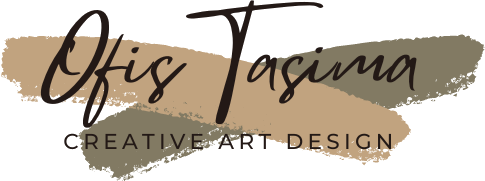Design is an omnipresent force that shapes the world around us. From the buildings we inhabit to the websites we navigate, from the products we use to the visual experiences we consume – design influences our perceptions, behaviors, and interactions. While aesthetics play a crucial role, designing is not merely about creating visually appealing objects; it’s about solving problems, enhancing user experiences, and ultimately making the world function more seamlessly. In this extensive exploration, we delve into the multifaceted realm of designing, uncovering its core principles, various disciplines, and the transformative impact it has on industries and societies.
The Essence of Design:
Design is more than meets the eye. At its core, design is a problem-solving process that requires creativity, empathy, and a deep understanding of user needs. Whether designing a user interface, a product, or a physical space, the primary goal is to create something that is not only visually appealing but also functional, intuitive, and purposeful.
Key Principles of Design:
- Functionality: At the heart of any successful design is functionality. It’s about creating solutions that work – be it a chair that provides comfort, a website that is easy to navigate, or a product that simplifies a task. Functionality ensures that design serves a practical purpose.
- User-Centricity: Understanding the end-user is paramount in design. A user-centric approach involves empathizing with the target audience, anticipating their needs, and tailoring the design to enhance their experiences. User research, personas, and user testing are integral components of this principle.
- Simplicity: The adage “less is more” holds true in design. Simplicity is about distilling complex ideas into clear, straightforward designs. A simple design not only communicates more effectively but also tends to be more memorable and user-friendly.
- Aesthetics: While aesthetics alone don’t define good design, they certainly contribute to its overall impact. Aesthetics involve the visual appeal of a design, including elements like color, typography, and composition. A harmonious visual presentation can enhance the user’s emotional connection to the design.
- Consistency: Consistency is key to creating a cohesive and recognizable design. Whether it’s a brand identity, a website layout, or a product line, maintaining consistency in design elements fosters a sense of unity and reliability.
- Accessibility: Design should be inclusive and accessible to all. Considering diverse abilities and ensuring that designs are usable by people with varying needs is a critical aspect of responsible and ethical design.
- Innovation: Design is an ever-evolving field, and innovation is its lifeblood. Innovation in design involves pushing boundaries, exploring new technologies, and finding novel solutions to emerging challenges.
Disciplines Within the Design Universe:
- Graphic Design: Graphic design involves creating visual content for various mediums, including print, digital, and social media. Graphic designers use their creativity and technical skills to communicate messages effectively through images, typography, and layout.
- User Experience (UX) Design: UX design is centered around enhancing the overall experience of users when interacting with a product or service. It involves understanding user behaviors, conducting usability testing, and designing interfaces that are intuitive and user-friendly.
- Product Design: Product design focuses on creating physical or digital products that meet user needs and solve specific problems. Product designers consider functionality, aesthetics, and user experience to bring innovative and practical solutions to the market.
- Interior Design: Interior designers plan and design the layout of indoor spaces, considering factors such as functionality, aesthetics, and user experience. They create environments that are not only visually appealing but also conducive to the intended activities within the space.
- Web Design: Web designers are responsible for creating the visual and interactive elements of websites. They consider user experience, navigation, and aesthetics to ensure that the website is both visually appealing and easy to use.
- Industrial Design: Industrial designers focus on designing products that are mass-produced, considering factors such as materials, manufacturing processes, and user interactions. Their goal is to create products that are both functional and aesthetically pleasing.
- Fashion Design: Fashion designers create clothing and accessories, considering factors such as trends, materials, and functionality. Fashion design is a blend of creativity and practicality, as designers aim to create garments that are not only stylish but also comfortable and functional.
- Service Design: Service designers focus on improving and optimizing the entire service delivery process. They consider the end-to-end customer journey, identifying pain points and opportunities for improvement to enhance the overall service experience.
The Transformative Impact of Design:
- Enhanced User Experiences: Well-designed products and services contribute to positive user experiences. User-centric design principles ensure that interfaces are intuitive, interactions are seamless, and users can achieve their goals with minimal effort.
- Brand Identity and Recognition: Design plays a crucial role in establishing and maintaining a brand’s identity. Consistent visual elements, such as logos, color schemes, and typography, contribute to brand recognition and help create a strong and memorable brand image.
- Innovation and Problem-Solving: Design thinking, an approach that emphasizes empathy and iterative problem-solving, has become a catalyst for innovation. Designers are often at the forefront of finding creative solutions to complex challenges, driving progress in various industries.
- Economic Impact: Innovative and well-designed products often enjoy commercial success, contributing to economic growth. Design-led companies tend to outperform their competitors, showcasing the economic impact of investing in thoughtful and user-centric design.
- Cultural Influence: Design has the power to shape and reflect cultural trends. From architecture to fashion, design influences the way we perceive and express cultural identity. Iconic designs often become symbols of specific eras and movements.
- Environmental Sustainability: Designers are increasingly incorporating sustainability principles into their work. From eco-friendly product design to sustainable architecture, the design community is contributing to a more environmentally conscious and responsible world.
- Social Impact: Design can have a profound impact on social issues. Designers often engage in projects that address social challenges, such as inclusive design for people with disabilities, community-focused architecture, and products that serve humanitarian purposes.
Design Thinking: A Problem-Solving Approach:
Design thinking is a problem-solving methodology that places empathy, ideation, and iteration at its core. This approach, often associated with the design field, has transcended disciplines and is now embraced by businesses, educators, and organizations seeking innovative solutions. The design thinking process typically involves the following stages:
- Empathize: Understand the needs, desires, and challenges of the end-users. This stage involves conducting research, interviews, and observations to gain a deep understanding of the target audience.
- Define: Clearly articulate the problem or challenge based on the insights gathered during the empathize stage. Defining the problem sets the stage for creative problem-solving and solution development.
- Ideate: Generate a wide range of creative ideas to address the defined problem. Ideation encourages a free-flowing exchange of ideas, fostering creativity and opening the door to innovative solutions.
- Prototype: Create tangible representations of the proposed solutions. Prototypes can take various forms, from physical models to digital simulations. Prototyping allows for testing and refinement before full-scale implementation.
- Test: Test the prototypes with end-users to gather feedback and insights. The testing phase informs further iterations and refinements, ensuring that the final solution meets user needs effectively.
Design thinking is not a linear process; it encourages iteration and revisiting previous stages as new insights emerge. This dynamic and user-centered approach to problem-solving has become a cornerstone in fostering innovation and adaptability.

Challenges and Considerations in Design:
- Balancing Form and Function: Finding the right balance between aesthetics and functionality is a perpetual challenge in design. Striking this balance requires thoughtful decision-making and a deep understanding of user needs.
- Cultural Sensitivity: Designers must consider cultural nuances and sensitivities, especially in a globalized world. A design that resonates positively in one culture might be interpreted differently in another, highlighting the importance of cultural awareness.
- Technology Integration: Rapid advancements in technology present both opportunities and challenges for designers. Integrating new technologies into design processes requires staying abreast of innovations and understanding their implications for user experiences.
- Sustainability: As environmental concerns take center stage, designers face the challenge of creating sustainable solutions. This involves considering the lifecycle of products, the environmental impact of materials, and designing for longevity and recyclability.
- Inclusive Design: Designers must strive to create inclusive solutions that cater to a diverse range of users. This involves considering accessibility features, accommodating different abilities, and ensuring that designs are universally usable.
- Ethical Considerations: Design decisions can have ethical implications. From data privacy in digital design to the ethical use of materials in product design, designers must navigate complex ethical considerations to create responsible and sustainable solutions.
The Future of Design:
The future of design holds exciting possibilities as the field continues to evolve and adapt to emerging challenges and opportunities. Several trends are shaping the trajectory of design:
- Augmented and Virtual Reality: The integration of augmented reality (AR) and virtual reality (VR) into design processes is becoming more prevalent. These technologies offer new ways to visualize and interact with designs, particularly in architecture, product prototyping, and user interface design.
- Artificial Intelligence in Design: Artificial intelligence (AI) is influencing design by automating certain tasks, predicting user preferences, and even generating design elements. AI tools are increasingly used in areas like graphic design, user experience testing, and personalized content creation.
- Sustainable Design Practices: The focus on sustainability is expected to intensify, with designers incorporating eco-friendly materials, energy-efficient solutions, and circular design principles. Sustainable design practices will likely become a standard in the industry.
- Generative Design: Generative design, driven by algorithms and parametric modeling, enables designers to explore a vast array of design possibilities. This approach is particularly relevant in architecture, product design, and other fields where complex optimization is required.
- Human-Centered Artificial Intelligence: Designers will play a crucial role in shaping the user experience of AI-driven products and services. Emphasizing human-centered AI design involves addressing ethical considerations, bias, and ensuring transparency in AI decision-making processes.
- Remote Collaboration Tools: The rise of remote work has accelerated the adoption of collaborative design tools. Designers are using virtual whiteboards, real-time collaboration platforms, and cloud-based tools to work seamlessly across geographies.
Conclusion:
Designing is a dynamic force that shapes the world in profound ways. Beyond aesthetics, it is a problem-solving process, an empathetic exploration of user needs, and a catalyst for innovation. From the tangible products we use daily to the intangible digital experiences we navigate, design influences our interactions with the world around us.
As design continues to evolve, its impact on industries, societies, and the way we live is undeniable. The principles of good design – functionality, user-centricity, simplicity, and innovation – remain timeless, guiding designers in their quest to create meaningful and purposeful solutions.
In a world marked by constant change and complexity, the art and science of designing provide a pathway to navigate challenges, find innovative solutions, and create a more interconnected and harmonious future. Whether in the physical or digital realm, the essence of design lies in its ability to transform ideas into reality, making a lasting and meaningful impact on the way we experience and shape our world.
